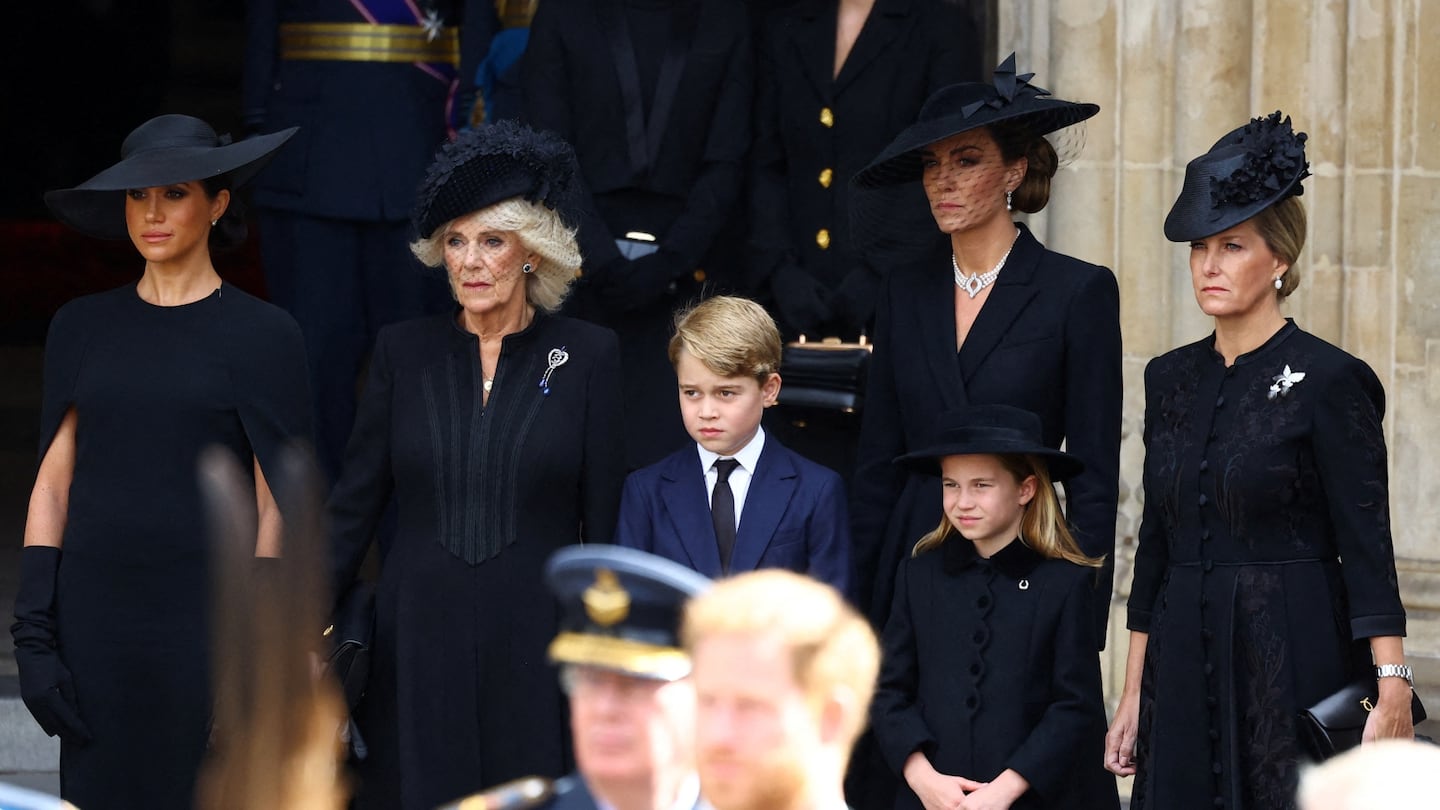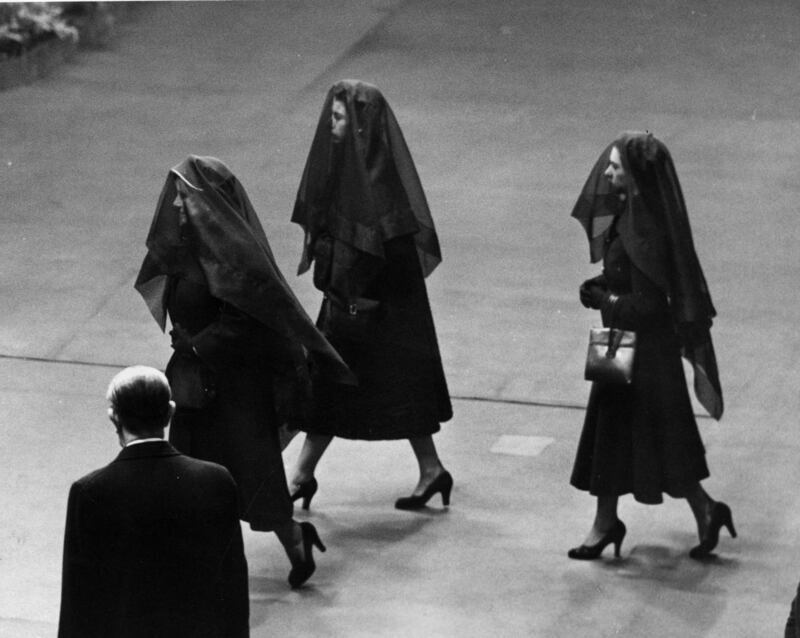
The Business of Fashion
Agenda-setting intelligence, analysis and advice for the global fashion community.

Agenda-setting intelligence, analysis and advice for the global fashion community.

Seventy years have passed since the last time a monarch was buried in the United Kingdom. And while the pomp and ceremony of Queen Elizabeth II’s funeral had many similarities to the 1952 memorial held for her father, King George VI, it included several modern updates.
Over the course of her record-breaking reign, Queen Elizabeth helped to bring Britain into the modern age. But she was also a staunch adherent to royal tradition and her funeral, which she herself helped to plan before her death, reflected this mindset.
Over 2,000 guests attended the ceremony at Westminster Abbey, including a long list of foreign royals, politicians and other dignitaries, as well as every adult member of the extended royal family. The event will be the first state funeral held in the United Kingdom since Winston Churchill’s in 1965.
When it comes to dress code, protocol is strict. The service saw royal fashion traditions, such as veils, that haven’t been seen in the decades since George VI’s funeral, styled in a more contemporary manner. There have also been heated discussions over who is permitted to wear military uniform.
ADVERTISEMENT
“This is pretty formal,” Marlene Koenig, royal historian and author of the website Royal Musings, said. “This is the highest of the highest for a funeral.”
What to Wear
Much of the attire at the funeral was just as you’d expect: Sombre, black dresses for women and men in suits. There are 21st century updates: A rule that previously forbid women from wearing pants was amended ahead of the service. Of course, hats were de rigueur for women, with even 7-year-old Princess Charlotte wearing one. But the sort of eye-catching (even headline-making) fascinators that are standard at more celebratory events like royal weddings were kept at home in favour of more subdued styles.
After Her Majesty’s death, British atelier and milliners prepared for the onsalught of orders. “We changed our shop over to only black hats in anticipation of the needs of our customers,” said Stephen Jones, a London-based milliner. “What I feel is most suitable is simplicity both in silhouette and in texture. Naturally a veil, also is part of mourning so many of our simple black hats were re-trimmed with short veils. I feel this is little to do with fashion and more about being respectful and appropriately dressed.”
Prominent royal women like Catherine, the Princess of Wales and Queen Consort Camilla likely had their ensembles for this occasion prepared and sitting in their closets for months, if not years now. There was speculation that Kate, as well as Meghan, the Duchess of Sussex, whose clothes are the subject of endless chatter, may have chosen to rewear a previously-worn outfit. Ultimately, the Princess of Wales wore a black version of the Alexander McQueen coat dress that she wore at the Queen’s Platinum Jubilee in June, while the Duchess of Sussex wore a black dress with a cape detail.
“They are fairly cognisant that their fashion is discussed and debated widely,” said royal historian Jessica Storoschuk of An Historian About Town. “We see them wearing repeats at events where they don’t want to draw attention from whatever is happening.”

One of the biggest questions surrounding attire at the funeral was whether the senior female members of the royal family, such as the Queen Consort, the Princess of Wales and the Duchess of Sussex would wear full veils for the occasion.
Such headwear was a staple of royal funerals for decades, and Queen Elizabeth, Princess Margaret, the Queen Mother and Queen Mary all wore them to King George VI’s funeral. However, when the Queen Mother died in 2002, veils were absent from her funeral. (A state funeral for a reigning monarch, however, is a more formal and significant occasion.)
ADVERTISEMENT
While many royal fans hoped they’d make a reappearance on Monday, as a sign of the opulence of the monarchy, veils were a rare sight at Queen Elizabeth’s funeral, a sign of how much has changed over the course of her reign.
“It’s such a unique opportunity to be reminded of the position that these people hold, because no one else is going around wearing a long formal black coat, diamond jewellery and this elaborate mourning veil,” said royal fashion expert Christine Ross. “We only see it once every few decades for the death of a monarch.”
King Charles may have advised against the more antiquated accessory, particularly as he prepares to usher in an era of a “slimmed down” monarchy in order to justify the institution’s existence in today’s world.
The Princess of Wales and the Duchess of Sussex managed to find a middle ground during the service for the reception of the Queen’s coffin at Westminster Hall on Wednesday, where they wore less dramatic birdcage veils, a thin, transparent net veil that drapes over part of the face — a more contemporary, less dramatic take on the accessory. Catherine took a similar approach at the funeral, with a thin, transparent net veil covering — but not obscuring — the entirety of her face, as did Queen Consort Camilla.
“I would be very surprised in 2022 that these women will be veiled,” said Koenig. “I think we’ve moved beyond that.”
Attendees, particularly royal women, honoured the Queen in other ways through their accessory choices. The Princess of Wales and Duchess of Sussex wore pieces from the Queen’s jewellery collection during the mourning period. The Duchess of Sussex wore a pair of diamond and pearl earrings that belonged to the Queen, while the Princess of Wales wore the Queen’s diamond and multi-strand pearl necklace, which she also wore to Prince Philip’s funeral last year. Even Princess Charlotte wore a small horseshoe-shaped diamond brooch, reportedly a gift from her late great-grandmother.
Other guests without direct access to the Queen’s jewels found their own ways to pay homage to Her Majesty. Baroness Patricia Scotland, the Secretary-General of the Commonwealth, who spoke at the funeral, wore a double strand of pearls, for example.
“We’ll see a lot of pearls throughout the congregation at the funeral because the Queen was so fond of them,” said Ross, referencing the Queen’s signature three-strand pearl necklace, which it is speculated that the Princess of Wales wore on Tuesday to greet her coffin as it arrived at Buckingham Palace. “They’ve almost become synonymous with Queen Elizabeth.”
ADVERTISEMENT
In Uniform
A point of contention that has emerged around the Queen’s funeral is which members of the royal family were allowed to wear military uniform for the service.

In the UK, only active service members are permitted to wear their military uniforms. While royals like King Charles, the Prince of Wales, the Princess Royal and even lesser royals such as the Dukes of Kent and Gloucester are not active service members, they do hold honourary military titles, which grants them the same privilege.
The controversy that has emerged primarily surrounds whether Prince Harry, the Duke of Sussex, will be allowed to do the same. Harry served in the British army for a decade, even undertaking two tours in Afghanistan, one of the only living royals to face combat. (Prince Andrew, the Duke of York, also saw active combat in the Falkland Islands in the ‘80s, but will also wear a suit to the funeral as he stepped back from royal duties at the end of 2019 following the fallout over his links to Jeffrey Epstein and allegations of sexual misconduct).
A spokesperson for the Duke of Sussex put out a statement confirming that Prince Harry would wear a suit at the funeral, putting a stop to speculation. “His decade of military service is not determined by the uniform he wears, and we respectfully ask that focus remain on the life and legacy of Her Majesty Queen Elizabeth II,” the spokesperson said.
However, it was later revealed that Prince Harry would wear his military uniform for a vigil at Westminster Hall on Sunday that all eight of the Queen’s grandchildren would hold. At a vigil held by the Queen’s four children on Friday, Prince Andrew was also allowed to wear his uniform. Permission to do so would have been granted to both by King Charles.
“Formally, if you’re no longer in the military, you’re not allowed to wear a uniform anymore,” said Koenig. “It’s up to the King.”
From analysis of the global fashion and beauty industries to career and personal advice, BoF’s founder and CEO, Imran Amed, will be answering your questions on Sunday, February 18, 2024 during London Fashion Week.
The State of Fashion 2024 breaks down the 10 themes that will define the industry in the year ahead.
Imran Amed reviews the most important fashion stories of the year and shares his predictions on what this means for the industry in 2024.
After three days of inspiring talks, guests closed out BoF’s gathering for big thinkers with a black tie gala followed by an intimate performance from Rita Ora — guest starring Billy Porter.